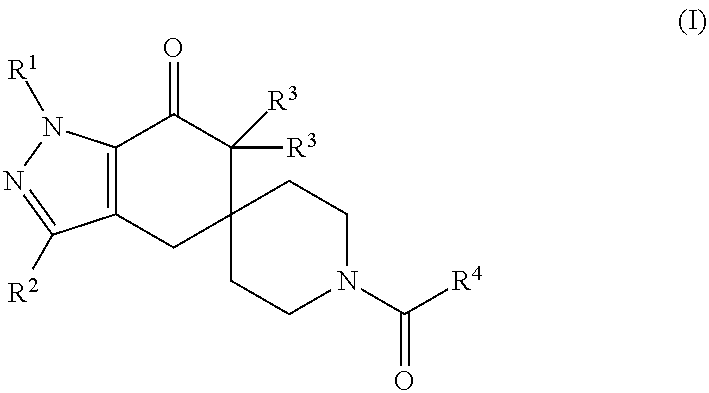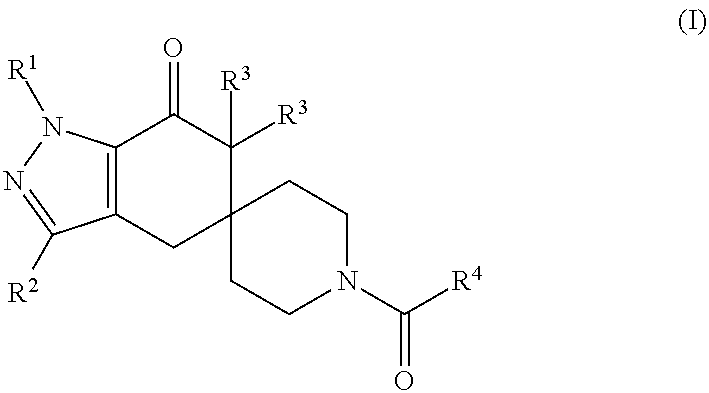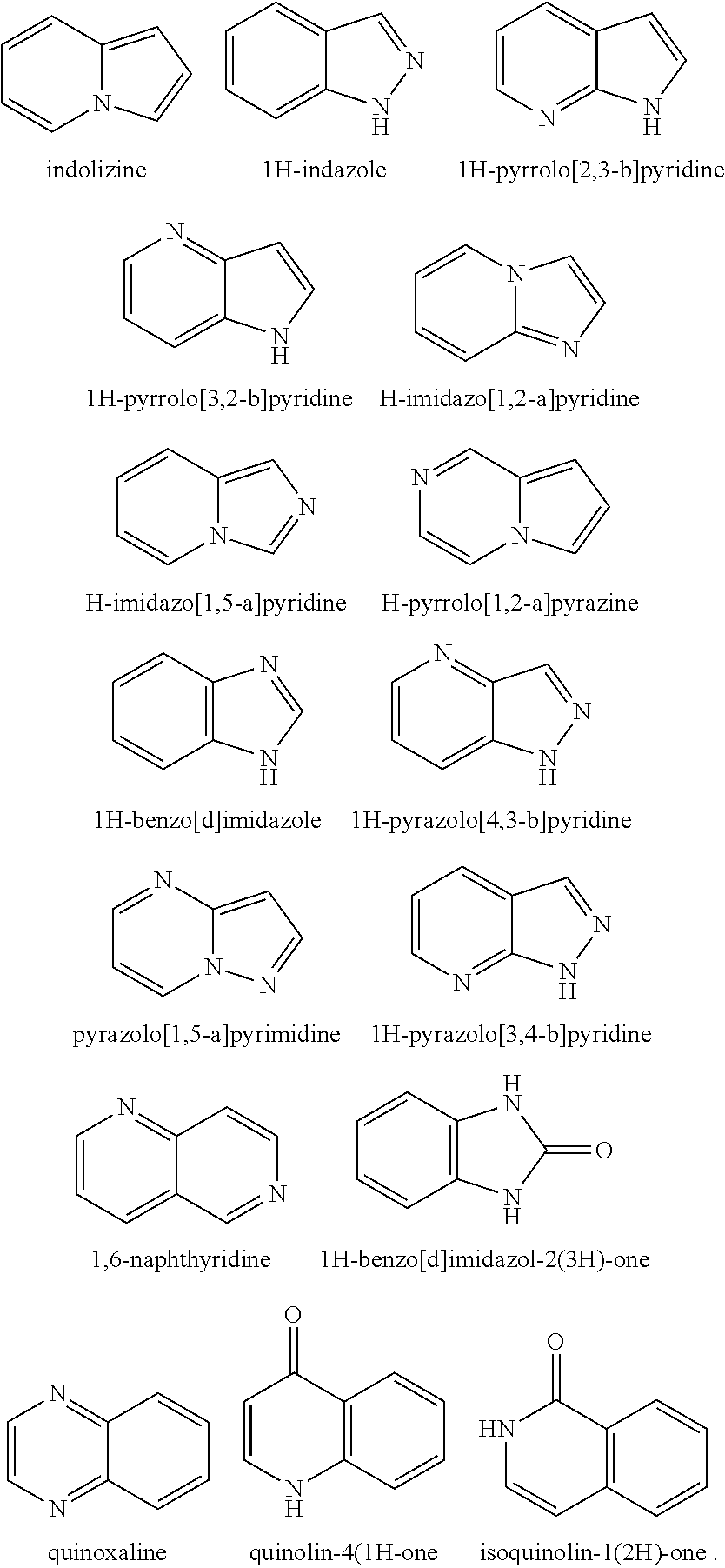N1-pyrazolospiroketone acetyl-CoA carboxylase inhibitors
a technology of pyrazolospiroketone and acetylcoa, which is applied in the field of substituted pyrazolospiroketone compounds, can solve the problems of selective loss of body fa
- Summary
- Abstract
- Description
- Claims
- Application Information
AI Technical Summary
Benefits of technology
Problems solved by technology
Method used
Image
Examples
examples
[0077]The compounds and intermediates described below were generally named according to the IUPAC (International Union for Pure and Applied Chemistry) recommendations on Nomenclature of Organic Chemistry and the CAS Index rules. Unless noted otherwise, all reactants were obtained commercially.
[0078]Flash chromatography was performed according to the method described by Still et al., J. Org. Chem., 1978, 43, 2923.
[0079]All Biotage® purifications, discussed herein, were performed using either a 40M or 40S Biotage® column containing KP-SIL silica (40-63 μM, 60 Angstroms) (Biotage AB; Uppsala, Sweden).
[0080]All CombiFlash® purifications, discussed herein, were performed using a CombiFlash® Companion system (Teledyne Isco; Lincoln, Nebr.) utilizing packed RediSep® silica columns
[0081]Mass Spectra were recorded on a Waters (Waters Corp.; Milford, Mass.) Micromass Platform II spectrometer. Unless otherwise specified, mass spectra were recorded on a Waters (Milford, Mass.) Micromass Platfor...
2a-42b
Preparation I-2A-42b
diethyl 2-(1″-(tert-butoxycarbonyl)spiro[indazole-5,4′-piperidine]-1(4H)-yl)malonate
[0190]
[0191]Preparation I-2A-42a (1.45 g 3.86 mmol) in toluene (5 mL) was added to a suspension of sodium hydride (0.148 g, 60% dispersion in mineral oil) in diethyl carbonate (30 mL), dropwise at 80° C. over 30 minutes. The reaction was stirred at reflux for 1.5 hours. 1H NMR indicated that starting material was consumed and that the desired product had formed. The reaction mixture was cooled to room temperature. Methanol (1 mL) was added and the solution was stirred at room temperature for 5 minutes. Water (5 mL) was added. The solution was acidified to pH˜3 with 2 N aqueous, hydrochloric acid (3 mL) then was extracted with dichloromethane (3×15 mL). The combined organics were dried over magnesium sulfate, filtered, concentrated, and dried under high vacuum to yield a brown gum (1.59 g, 92%). The crude material was triturated with 1:1 diethyl ether: heptanes (50 mL). The precipi...
2a-42d
Preparation I-2A-42d
tert-butyl 1-(oxetan-3-yl)-1,4-dihydrospiro[indazole-5,4′-piperidine]-1′-carboxylate
[0194]
[0195]2.5 M n-butyl lithium in hexanes (0.33 ml, 165 uL) was added to a solution of Preparation I-2A-42c (150 mg, 0.41 mmol) in tetrahydrofuran (8 mL) at −6.2° C. The temperature was never greater than −3.7° C. during the addition. The solution was stirred at −8° C. for 30 minutes. A solution of p-toluenesulfonyl chloride (79 mg) in tetrahydrofuran (2 mL) was added to the reaction mixture at −5° C. The temperature was never greater than −2° C. during the addition. The reaction was stirred at −5° C. for 1 hour then the reaction mixture was cooled to −6° C. and 2.5 M n-butyl lithium in hexanes (0.33 mL, 165 uL) was added over 2 minutes. The temperature was never greater than −3.5° C. during the addition. The cooling bath was removed and the reaction was stirred at an internal temperature of 60° C. for 16 hours. The reaction mixture was cooled to room temperature and ethyl acet...
PUM
| Property | Measurement | Unit |
|---|---|---|
| weight | aaaaa | aaaaa |
| volume | aaaaa | aaaaa |
| pressure | aaaaa | aaaaa |
Abstract
Description
Claims
Application Information
 Login to View More
Login to View More - R&D
- Intellectual Property
- Life Sciences
- Materials
- Tech Scout
- Unparalleled Data Quality
- Higher Quality Content
- 60% Fewer Hallucinations
Browse by: Latest US Patents, China's latest patents, Technical Efficacy Thesaurus, Application Domain, Technology Topic, Popular Technical Reports.
© 2025 PatSnap. All rights reserved.Legal|Privacy policy|Modern Slavery Act Transparency Statement|Sitemap|About US| Contact US: help@patsnap.com



